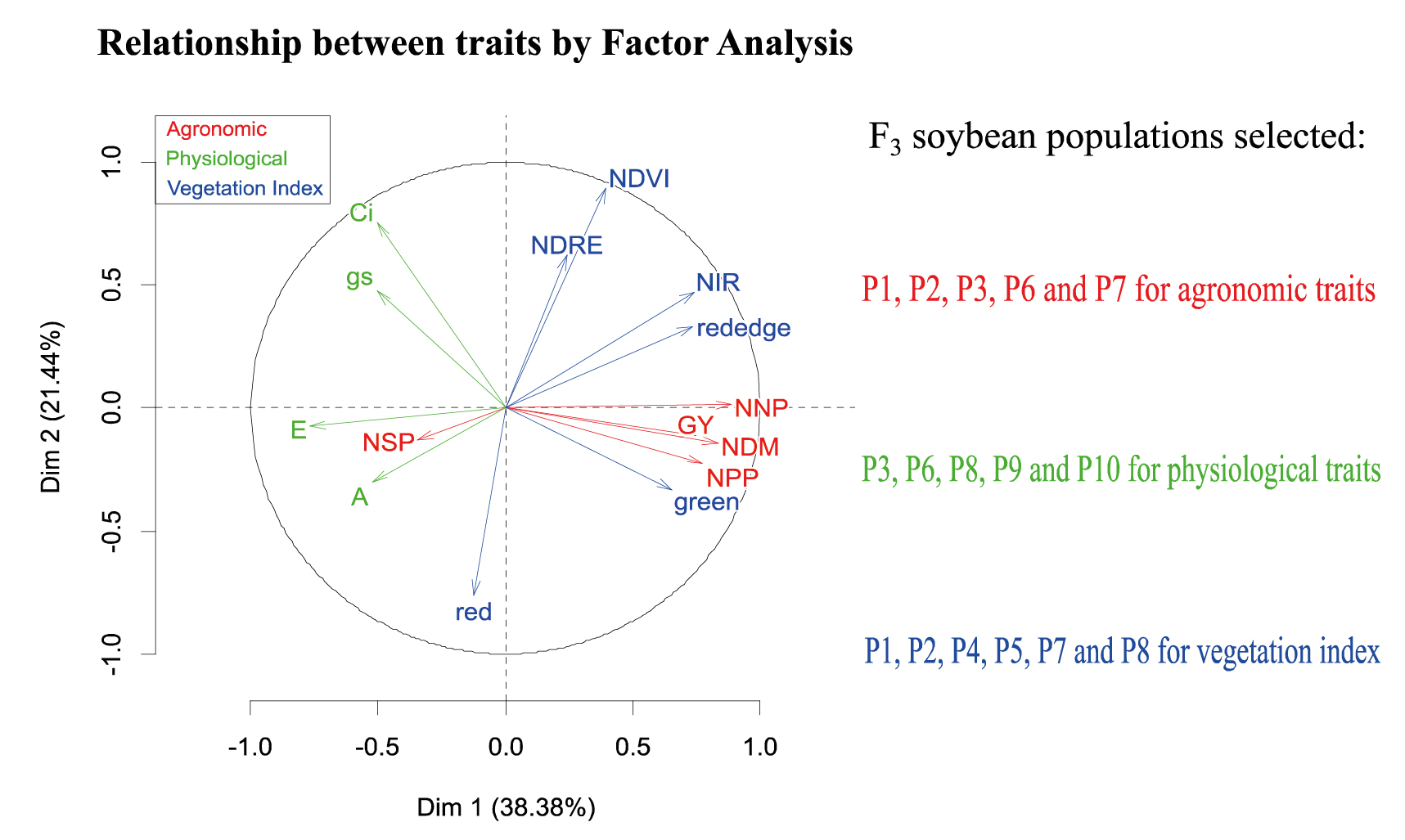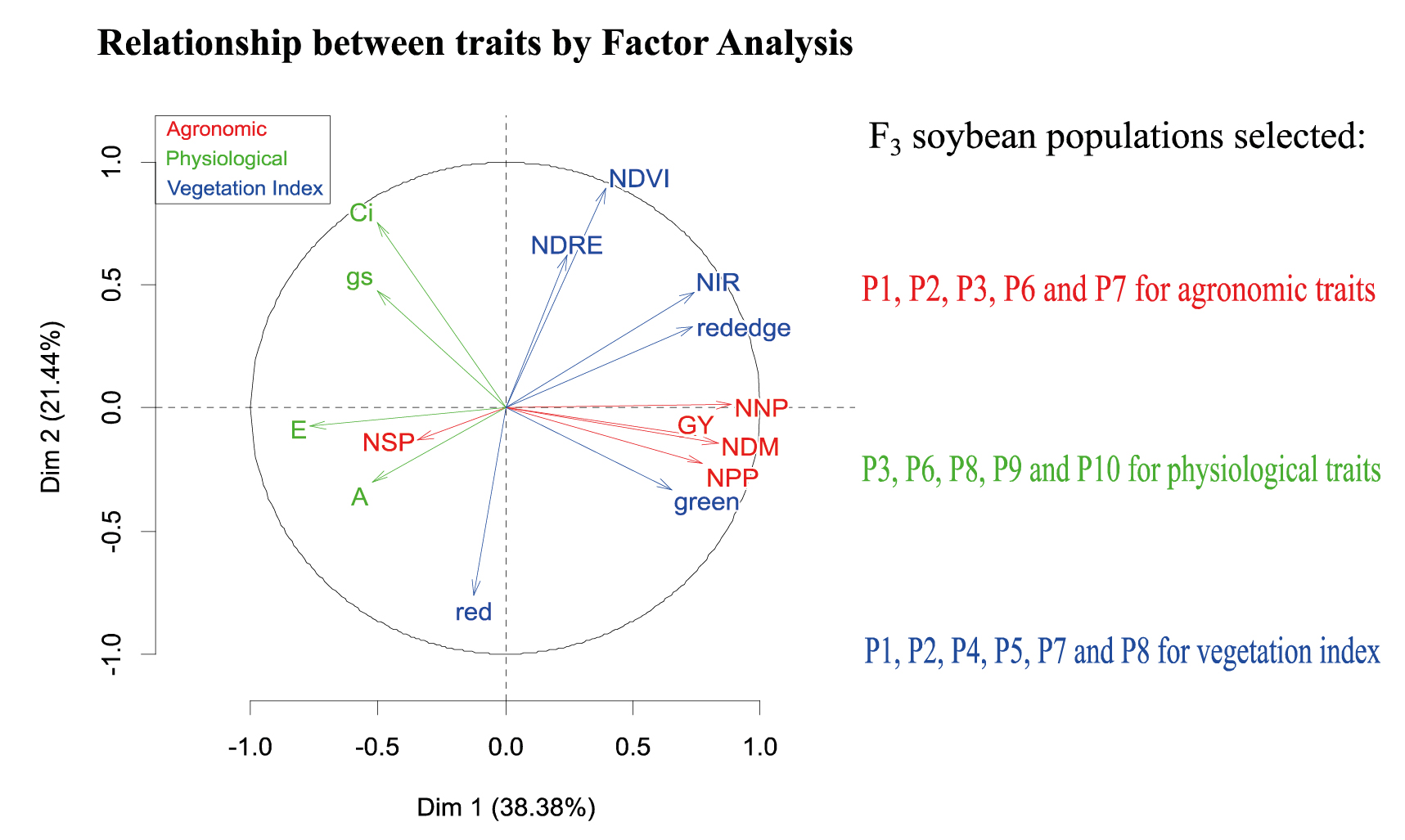Selection of soybean F3 populations for agronomic and physiological traits and vegetation indices using multivariate approaches
Keywords:
Glycine max, Segregating populations, NDVI, NDRE, photosynthetic efficiencyAbstract

The objective of this work was to select F3 segregating populations for agronomic and physiological traits and vegetation indices. The experiment was carried out in the 2018/2019 crop seasons in a randomized block design with three replicates and 10 F3 populations (P1, P2, P3, P4, P5, P6, P7, P8, P9, and P10). The evaluated traits were: number of days to maturity; number of pods per plant; number of nodes per plant; number of lateral stems per plant; grain yield, photosynthesis; stomatal conductance; internal CO2 concentration; transpiration; NIR, Red-edge, Red and Green wavelength; and NDVI and NDRE vegetation indices. In the physiological traits evaluated in soybean F3 populations, the P8 and P6 populations presented the highest averages for photosynthesis, while the P3, P10 and P9 populations presented the highest concentration values, CO2 (Ci), transpiration (E,) and stomatal conductance (gs). Therefore, the vegetation indices evaluated in soybean F3 populations, the populations P7, P2 and P1 presented higher averages for near and red infrared wavelengths. P5 and P4 showed a higher NDRE vegetation index and P8 showed a higher red wavelength. For agronomic traits, population P2 showed better results for the traits number of nodes per plant (NNP) and the number of lateral stems per plant (NHL). Populations P1 and P3 had a higher number of days for physiological maturation (NDM). The P7 population presented the highest number of pods per plant (NVP), and the P6 population the highest grain yield (PROD).
Highlights
- Soybean F3 populations were selected for agronomic and physiological traits and vegetation indices.
- Principal components were used to select these populations.
- Factor analysis allowed us to understand the relationship between the traits evaluated.
Downloads

Downloads
Published
How to Cite
Issue
Section
License
Aquellos autores/as que tengan publicaciones con esta revista, aceptan las Políticas Editoriales.










.jpg)




